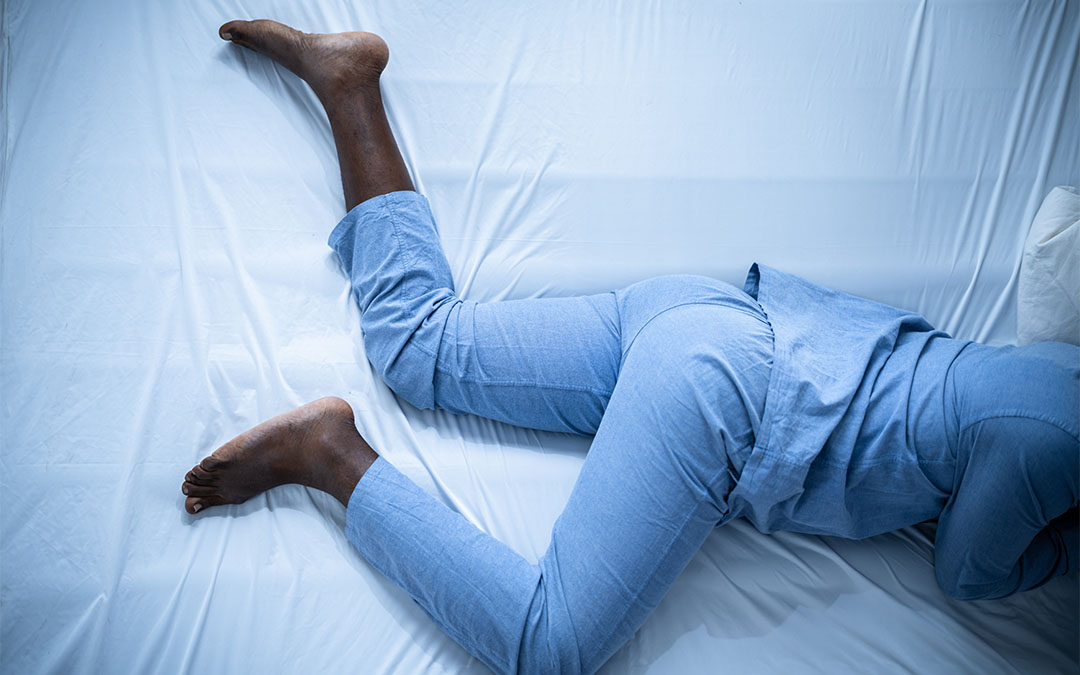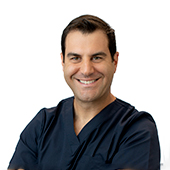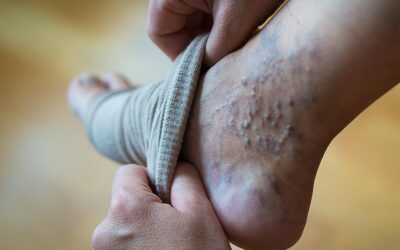Ever had the sudden urge to move your legs when you’re half asleep in bed at night? Or do your legs jolt suddenly and disturb your sleep? Common restless leg syndrome has no known cause but is thought to be a nervous system malfunction. However, did you know restless legs are also a symptom of varicose veins?
What are varicose veins?
Varicose veins are faulty veins in the legs or groin that no longer convey blood back to the heart effectively. Sections of the vein have become “incompetent”. There are a range of signs and symptoms, but you may notice some of them in the evening or at night. At the end of a long day of sitting or standing still, you may notice swelling in the legs as the incompetent engorged veins cause inflammation in the surrounding tissues.
Healthy veins have one-way valves along their inner walls which allow blood to flow in one direction only. The valves close between heartbeats to stop backflow. When these valves fail (known as venous insufficiency or varicose veins), the blood leaks backward, putting pressure on the veins and pushing out on the surface of the skin. This causes leg pain, itching, inflammation, swelling, heaviness, cramping, and restless legs.
Why does this happen? Sitting or standing keeps blood static in sections of diseased veins due to gravity. In addition to the heartbeat, part of the role of the calf muscles is to squeeze blood along veins, working against gravity and pushing blood upwards. So, sitting still or standing for extended periods does nothing to help get this static blood moving.
Could varicose veins be causing restless legs?
If you have varicose veins and restless legs, it’s entirely possible that varicose veins could be the culprit. Varicose veins are not just a cosmetic concern, they do have other symptoms including restless legs as I’ve mentioned, but perhaps you have written those signs off as something else. Seeing a phlebologist might be the key to resolving restless legs for you if they are related to varicose veins.
If you are genetically predisposed to vein disease, the vein problems will continue to develop and become more serious. Complications can develop as you age, including more severe pain and swelling, thickening of the skin around the ankles, venous dermatitis, bacterial infections, open sores, and even blood clot. That’s why if you are experiencing symptoms, it’s important to address them medically.
Treating varicose veins to relieve restless legs
Varicose veins can be treated by a phlebologist, who specialises in the diagnosis and treatment of vein conditions. These days treatments are no longer invasive and are walk-in, walk-out procedures with minimal downtime. Each procedure offered at Vein Health Medical Clinic involves closing off the diseased section with vein glue, a sclerosant, or laser, which allow the vein to heal. Blood reroutes through healthy veins nearby. These treatments include sclerotherapy, ultrasound guided sclerotherapy, Endovenous laser ablation, radiofrequency ablation, and VenaSeal vein glue. Depending on the diameter and location of the vein, the phlebologist will choose the ideal treatment for the veins.
Home remedies and oral supplements suggested for leg vein problems have shown poor results. Most do nothing at all. Others have recorded some temporary reduction in swelling; however, they do not resolve the problem vein and these slight results are not permanent. Diseased veins do not heal on their own and will require medical intervention.
Key Takeaways
- The common diagnosis of restless leg syndrome is thought to be caused by a nervous system malfunction. Restless legs are also a symptom of varicose veins.
- If you have restless legs at night as well as visible varicose veins, this could be the culprit.
- Either way, varicose veins should be treated, as they are not only a cosmetic concern and can develop into a worsening condition.
- Available treatments include sclerotherapy, ultrasound guided sclerotherapy, Endovenous laser ablation, radiofrequency ablation, and VenaSeal vein glue.






